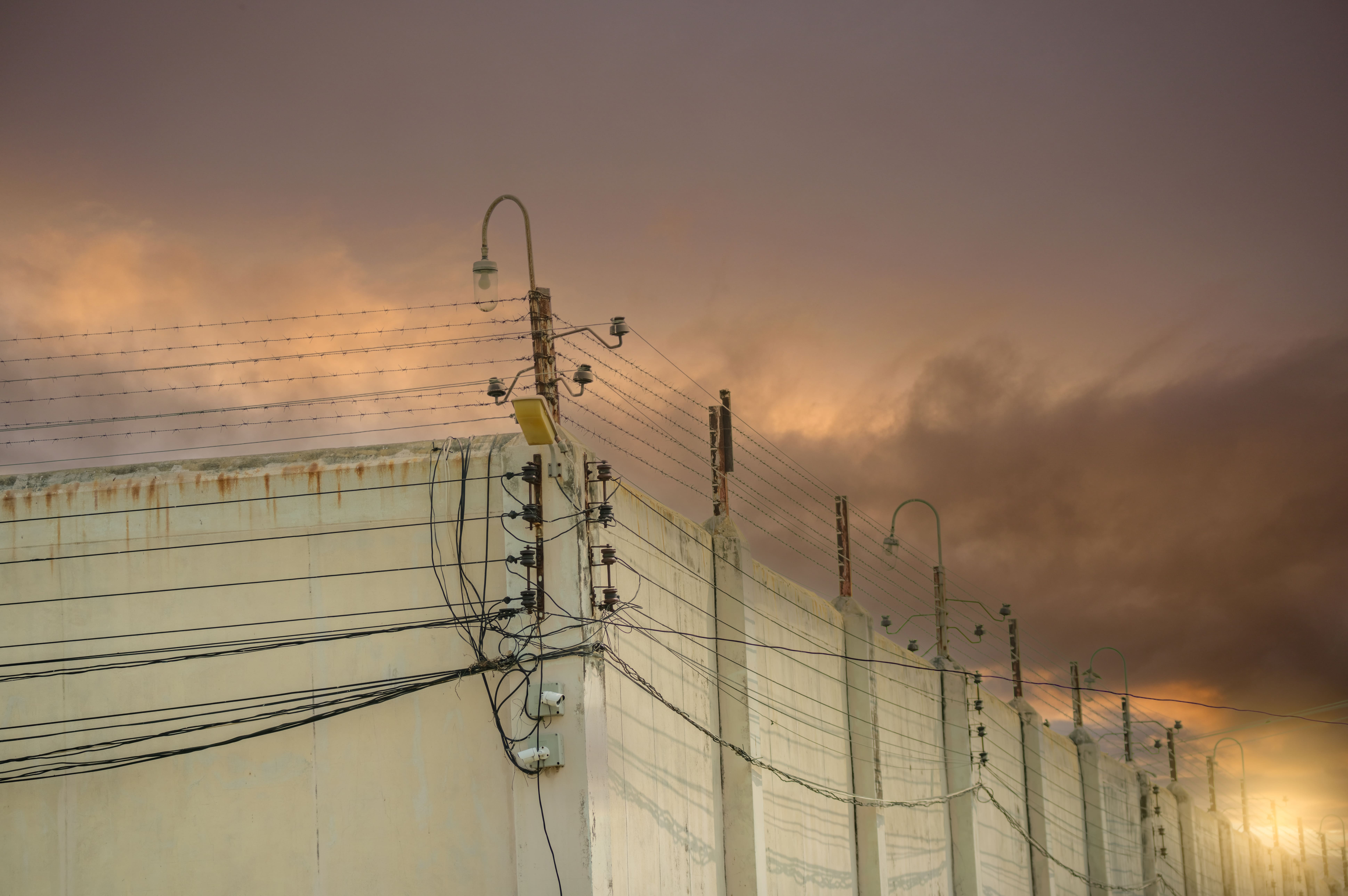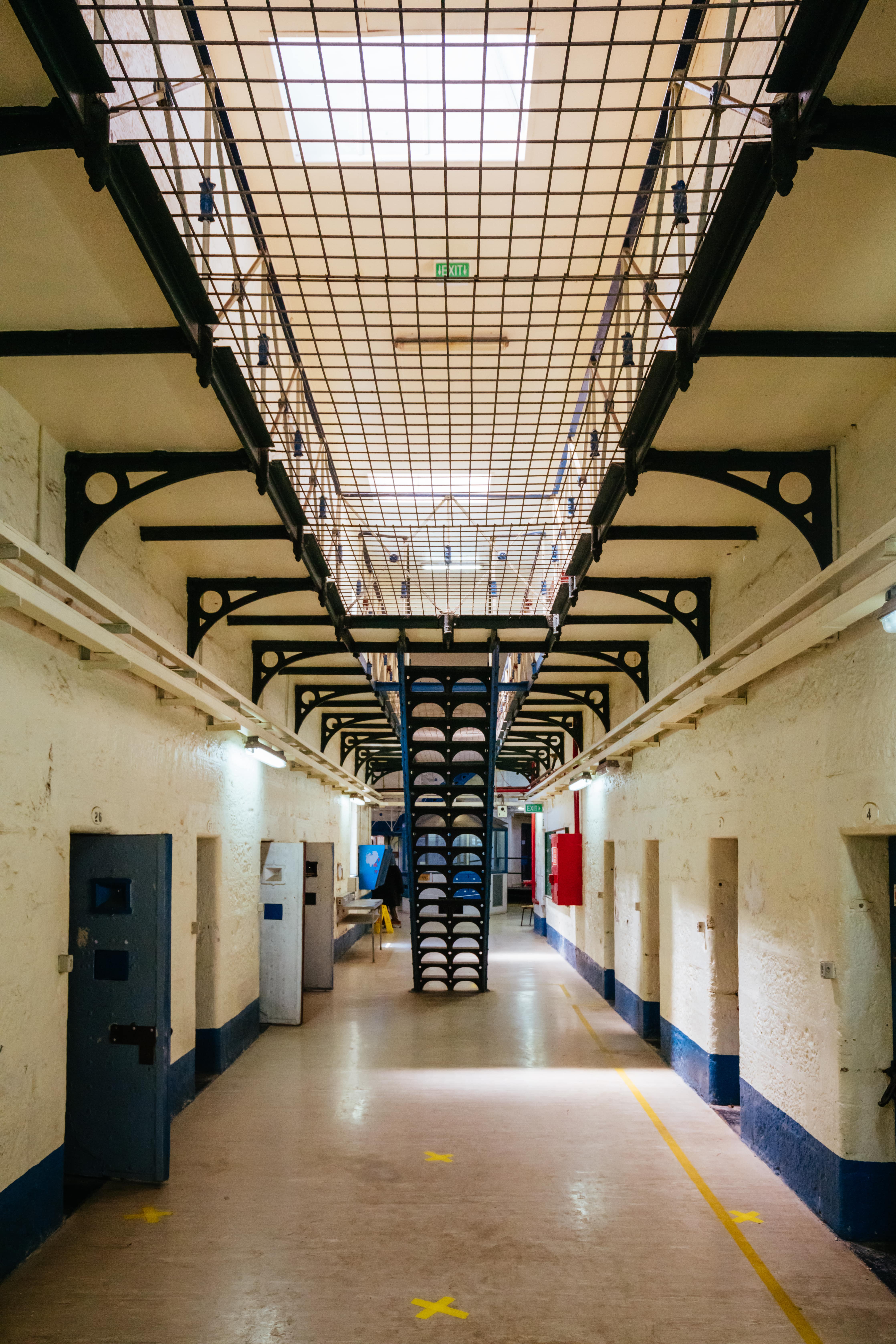
Perhaps a slightly unusual dream for a teenaged girl, I had my sights set on becoming a prison officer since I was fifteen. Fresh out of university, I finally made it to a large London prison holding over a thousand men. Whilst the chaos and the action did not disappoint, the humour and the humanity were more than I ever could have imagined.
Beguiled by this side to prison life that the rest of the world doesn’t see, I became determined to demystify the world of prisons and the people within them and generate a brave and informed conversation around a transformation of our justice system.
I always want to connect, so please contact me through bruce.houlder@gmail.com
It took me less than a week as a prison officer to witness first-hand the controversy which has prisoners and prison staff alike, stumped. The curious phenomenon that puzzles anyone who has ever spent any time in prison, which still, to this day, remains an unsolved mystery.
Why do they only serve the left leg of the chicken in jail?
Honestly. Almost every day the prisoners are served some form of chicken dish. The large metal vats are wheeled over to the wings packed with chicken legs swimming in some nondescript red sauce. Every single one of them - the left leg of the chicken.
Now, I’m willing to hedge my bets that if you asked any crime enthusiast - journalist, voter or politician - this would be the first they have heard of this conundrum. I imagine, if you instead asked them to describe what a prison looked like they would have no issues conjuring up the stained, gloomy, foreboding facade with vicious razor wire for arms which stretch along high concrete walls. They might then venture to describe the scuffed landings lined with metal doors and adorned with the purposeful white nets they’ve seen in a documentary or a newspaper.
But I’m convinced that not a single one would have the faintest idea that week in, week out, prisoners and officers tower over lukewarm vats of slippery chicken perplexed: buzzing, speculating and dreaming about the whereabouts of that elusive right leg.
I’m not suggesting it’s the sort of issue which should get to parliamentary debate, although I wouldn’t be opposed to getting to the bottom of it once and for all, but to me it begs the question: do people really have any idea what prison is like?
Whilst the courts are open to the public and policing happens all around us, very few people actually see life in prison. It’s as though prison happens in private, behind closed doors, like a dirty secret. Out of sight, out of mind.
But as crime rises ever higher in the list of manifesto priorities, I don’t feel comfortable with this - for want of a better phrase - blissful ignorance. In fact, as the unregulated debate spills out over social media and I watch people all over the country wallow and writhe in comforting, oversimplified slogans claiming to answer all their prayers, I can’t help but feel like we’ve entirely lost sight of what our prisons are meant to be. And if we can’t decide, I’m frightened that our prison system is destined to become a scorched battlefield, a no-man’s land, its straight-line borders eternally squabbled over. The liberal against the conservative, the young against the old, the economist against the punitive populist...
For argument’s sake though, let’s take the politics out of it for a moment. Let’s strip it back to basics, see if we can make any sense of it.
Something which we can generally all agree on is that prison has four overarching purposes: incapacitation, deterrence, rehabilitation, and retribution.
At a first glance, incapacitation is simple enough. It’s essential too, in my experience. I have seen enough jagged wounds and been thrown to the ground in the disorder of a prison brawl enough times to know that. How it is decided, who, when and for how long a person should be incapacitated is a different conversation, but the need for the government to protect their society by removing certain people is somewhat indisputable.
It’s when punishment is brought into the equation that this paradigm gets complex for me. The punishment for a crime has to be substantial enough that it deters a person from committing the crime in the first place. If that fails though, it then has to be substantial enough to deter them from committing the crime a second time. However, now it must simultaneously be intrinsically remedial as well as substantially punitive - that is to say that instead of purely pushing a person further into the depths of criminality by burdening them with more deprivation, isolation or trauma - that punishment should be accompanied by a rehabilitative force which leaves them in a better condition than they were before they committed that crime originally. And of course, before they endured that punishment.
As if all that wasn’t already enough to balance though, this punishment somehow also needs to be grave enough that we as a society, or as victims, consider retribution to have taken place.
Retribution, revenge, payback, justice, whatever you want to call it - that’s the bit we don’t talk about openly enough. It’s been a key pillar of our criminal justice system for centuries, though. Right up until the seventeen and eighteen hundreds the public could see justice being done with their own eyes and take their revenge on those nasty, hungry thieves by throwing rotten fruit at them in the stocks or watching their corpses fall still in
the gallows.
Those publicised practices were designed in such a way partly to serve as deterrents, but crucially, to satisfy the public’s retributive thirst.
Today though, when punishment happens behind closed doors, where can people go to quench that thirst?
When we’ve built the prison walls so high that (almost) all that can escape are overcrowding statistics and the odd picture of a 6x8 foot cell with, God forbid, a telly in it.
When our only window through which to witness this punishment is TV dramas where two-dimensional villains thrive on prison wings or news articles where malicious black-eyed men accused of heinous crimes glare back at us smugly from mug shots.
I find it pretty hard to believe that our appetite has just faded away. In fact, I think our search for that retributive feed is stronger than ever, we’ve just found new ways of indulging it.
Perhaps we’ve simply swapped the stocks for Twitter and the gallows for soundbite headlines, so we can sit comfortably in our armchairs and demand longer sentences and fewer chances for people like them. Not us, but them. Those beings who we have nothing in common with. Who really aren’t our problem. Who certainly aren’t our fault and frankly, who we’re better off without.
We’ve created not just a physical barrier between us and them, but a moral distance. It’s as though we’ve constructed these places, segregated them from our communities, obscured them from our line of sight and washed our hands of them. Like we’ve started to view prisons simply as a solution to our societal waste. And like the great Pacific Garbage Patch we will just continue to bag up our unwanted and ship them off to be dealt with elsewhere. Out of sight, out of mind.
But there’s a price to pay for that. Time and time again, with every person who comes out of prison just as likely, or more likely, to commit a crime than they were when they went in, that price rears its ugly head.
It seems to me that as a nation we are conflating deterrence with retribution. Or in some cases, simply calling retribution deterrence. And for us to get a grip on our prison system which is swelling towards an unsustainable mass, we have got to re-find that balance. We have got to understand deterrence and that means prioritising the prevention of crime, not the reparations for crime.
I don’t know what the solution is, but I do know that it has to start with a curiosity, not with a contempt, for our justice system and the people within it.
If we can get curious as a nation, then I am convinced that we can unlock the potential we have for a justice system we are proud of. Because this country is bursting with the ingredients for a system which works. We have decades of ground-breaking research into human psychology which actually tells us how to influence a person’s behaviour. We have hundreds of thousands of dedicated teachers, ready for the funding and the training they need to divert the children they spend their days with away from crime. We have thousands of professionals; police officers, prison officers, solicitors and judges, social workers, probation workers, politicians and civil servants with initiatives, entrepreneurs with resources, mental health specialists - and most importantly, we have some exceptional, motivated and dedicated people with lived experience of prison who can guide us at every step of the way.
Government policies have already taken huge steps towards innovative and effective prison reform, but whilst the public continue to demand policies that are tough on crime, all these minds and all these powers are constrained to drive change in silos, in their third sector organisations or on their personal plights. Their potential is hampered because we refuse to change the political narrative around crime and people who commit it, whatever is happening behind the scenes.

We as the public have the power to change the direction of our prison system by calling for our leaders to put research and expertise at the forefront of reform. We are never going to reach a total consensus on how the government tackles crime, but we can give the government the confidence to publicly and proudly commit to a considered and evidence-based transformation of the justice system.
We as the public need to call for leaders to get wise on crime.